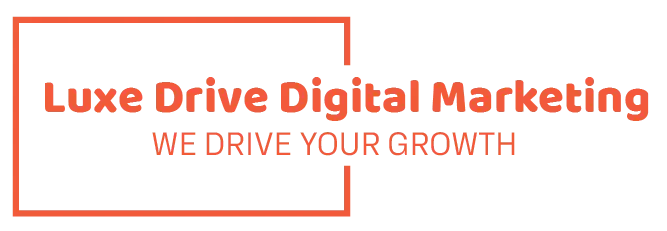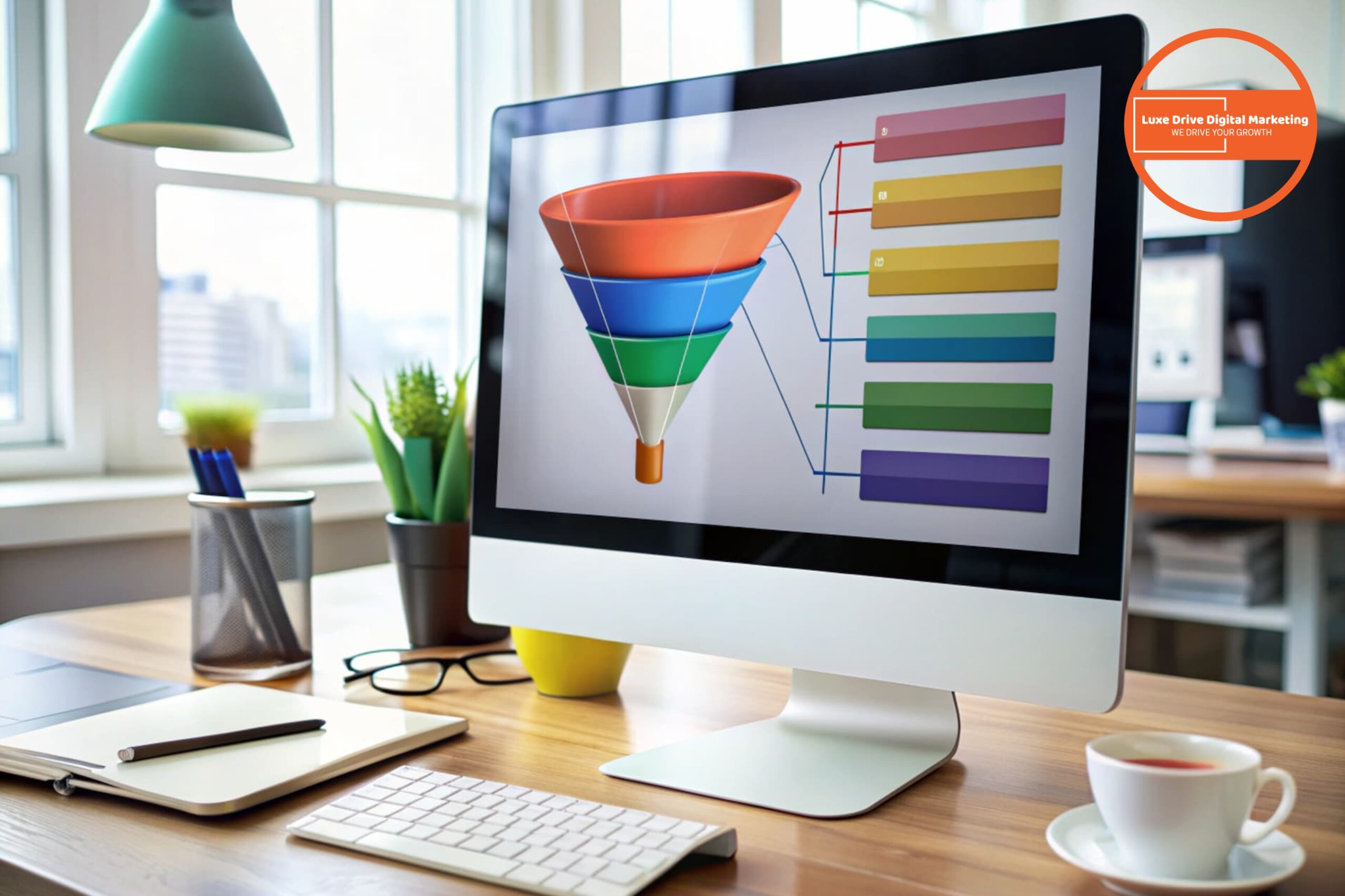A high-converting sales funnel is the backbone of successful digital marketing. It’s the strategic pathway that guides potential customers from initial awareness to final purchase and beyond. By understanding and implementing an effective funnel strategy, businesses can dramatically increase conversion rates and maximize revenue. This comprehensive guide will walk you through the process of building a sales funnel that not only attracts prospects but converts them into loyal customers.
What Is a Sales Funnel and Why Is It Essential for Your Business?
A sales funnel represents the journey a prospect takes from first discovering your brand to becoming a customer. This structured approach to the sales process allows businesses to nurture relationships with potential customers at every stage of their decision-making process.
The concept of a sales funnel is fundamental to effective sales because it acknowledges that not every prospect is ready to buy immediately. By understanding where each potential buyer is in their customer journey, your sales team can provide the right information and support at the right time. This strategic approach to marketing and sales increases the likelihood of conversion and helps build trust with your audience.
A well-built sales funnel also provides valuable insights into your marketing strategies, allowing you to identify bottlenecks and optimize your approach. Without a defined funnel strategy, businesses often waste resources on untargeted marketing efforts that fail to move prospects through the buying process.
What Are the Stages of a Sales Funnel?
Understanding the different stages of a sales funnel is crucial for creating an effective sales approach. Each stage represents a different level of prospect engagement and requires specific tactics to move potential customers forward.
The traditional sales funnel consists of four main stages: awareness, interest, decision, and action. However, modern sales funnel models often expand on this framework to better reflect the complexity of today’s customer journey.
At the top of the funnel, prospects become aware of your brand through various marketing channels such as blog posts, social media, or advertising. During the middle of the funnel, they show interest by engaging with your content and considering your solutions to their pain points. At the bottom of the funnel, prospects make purchasing decisions based on the trust and value you’ve established. Post-purchase stages focus on customer experience and nurturing relationships to encourage repeat sales and referrals.
Each stage of the funnel requires different content types and engagement strategies. Understanding this progression helps align your sales and marketing teams to create a seamless experience for potential customers.
How Do You Identify Your Target Audience for an Effective Funnel?
Creating a high-converting sales funnel begins with a deep understanding of your target audience. Without this foundation, even the most sophisticated funnel strategy will fail to resonate with potential customers.
Start by developing detailed buyer personas that capture the demographics, behaviors, motivations, and pain points of your ideal customers. This research should inform every aspect of your funnel design, from the language you use to the solutions you highlight.
Effective audience targeting also involves understanding the customer journey from their perspective. Map out the questions they ask, the information they seek, and the objections they raise at each stage of your funnel. This customer-centric approach ensures that your sales funnel addresses real needs rather than making assumptions about what might work.
Remember that your target audience may include different segments with varying needs and concerns. Your funnel strategy should be flexible enough to nurture different types of prospects, whether they’re ready to buy immediately or still in the early research phase.
What Are the Best Sales Funnel Examples to Model?
Examining successful sales funnel examples can provide valuable insights for building your own conversion funnel. Different industries and business models require different approaches, but certain principles remain consistent across effective sales funnels.
E-commerce sales funnels often focus on visual product showcases, customer reviews, and limited-time offers to create urgency. B2B sales funnels, on the other hand, typically emphasize educational content, case studies, and relationship building through multiple touchpoints. The B2C sales funnel tends to be shorter and more emotionally driven than B2B sales processes, which often involve multiple decision-makers and longer consideration periods.
One common element among successful funnel examples is clear, compelling messaging that addresses specific customer pain points. Another is strategic use of calls-to-action that guide prospects through each stage of the funnel. The most effective sales funnels also incorporate multiple channels—such as email, social media, and direct sales outreach—to maintain engagement throughout the customer journey.
By studying these examples, you can identify elements to incorporate into your own sales funnel while adapting them to fit your unique business context and target audience.
How Do You Build a Sales Funnel From Scratch?
Building a sales funnel from scratch requires careful planning and a systematic approach. While the process may seem overwhelming, breaking it down into manageable steps makes it achievable for businesses of any size.
First, establish clear objectives for your sales funnel. Are you looking to generate leads, increase direct sales, or nurture existing customers? Your goals will shape the structure and content of your funnel.
Next, map out each stage of your funnel, from initial awareness to post-purchase engagement. For each stage, identify the key actions you want prospects to take and the resources needed to support those actions. This blueprint serves as your sales funnel template for implementation.
Creating effective landing pages is critical for funnel success. Each landing page should have a single, clear purpose aligned with a specific stage of the funnel. Design these pages to minimize distractions and focus attention on your call-to-action, whether that’s collecting an email address, scheduling a demonstration, or making a purchase.
Finally, implement systems to track prospect movement through your funnel. This data will be essential for optimizing your sales funnel and improving conversion rates over time.
What Content Should You Create for Each Funnel Stage?
Content plays a vital role in nurturing prospects through each stage of the sales funnel. The right content addresses prospect needs and concerns while moving them closer to a purchasing decision.
For the top of the funnel, focus on awareness-building content that addresses broad industry challenges or interests. Blog posts, social media content, and educational videos work well at this stage, introducing prospects to your brand without aggressive selling.
As prospects move to the middle of the funnel, provide more detailed content that helps them evaluate solutions. Comparison guides, case studies, and webinars can help potential customers understand how your offerings address their specific pain points.
At the bottom of the funnel, content should support decision-making. Detailed product demonstrations, customer testimonials, and clear pricing information help prospects make their final choice. This is also where your sales team often becomes directly involved in addressing specific questions and concerns.
Post-purchase content focuses on customer success, featuring tutorials, support resources, and opportunities for deeper engagement. This ongoing nurture process is essential for customer retention and developing loyal customers who become advocates for your brand.
How Can You Create High-Converting Landing Pages?
Landing pages serve as critical conversion points within your sales funnel. Their effectiveness can dramatically impact your overall conversion rates and funnel performance.
The most effective landing pages maintain a laser focus on a single objective. Whether collecting an email address or facilitating a purchase, every element on the page should support this primary goal. Remove navigation menus, competing calls-to-action, and other distractions that might lead prospects away from your intended conversion path.
Compelling headlines that clearly communicate value are essential for landing page success. Follow these with concise, benefit-focused copy that addresses prospect pain points and explains how your offering provides solutions. Support your claims with social proof such as testimonials, reviews, or case studies to build credibility.
The design of your landing page should guide visitors naturally toward your call-to-action. Use visual hierarchy, white space, and directional cues to make the next step obvious. Ensure your forms are simple, requesting only essential information to reduce friction in the conversion process.
Finally, optimize your landing pages for mobile devices, as an increasing percentage of prospects will access them via smartphones or tablets. A poor mobile experience can undermine even the most compelling offer.
How Do You Nurture Prospects Through Email Marketing?
Email marketing remains one of the most powerful tools for nurturing prospects through your sales funnel. It provides a direct communication channel that helps build relationships over time.
Start by segmenting your email list based on prospect behavior, interests, and funnel stage. This allows you to deliver highly relevant content that addresses specific needs rather than generic messages that may miss the mark. Personalization extends beyond using a prospect’s name—it involves tailoring content, timing, and offers to individual circumstances.
Develop email sequences that guide prospects through a logical progression. Welcome sequences introduce new subscribers to your brand and set expectations. Educational sequences build trust by providing valuable information. Sales sequences make offers at appropriate times based on prospect engagement and readiness.
Throughout your email nurture process, focus on providing value rather than constantly selling. Share insights, answer common questions, and address pain points to position your brand as a trusted advisor. When you do make offers, ensure they’re relevant to the recipient’s demonstrated interests and funnel stage.
Monitor email engagement metrics closely to identify which messages resonate and which fall flat. Use this data to continuously refine your approach and improve the effectiveness of your email nurture campaigns.
What Tools and Software Help Build an Effective Sales Funnel?
The right tools can significantly streamline the process of building and managing your sales funnel. From capturing leads to analyzing performance, various software solutions support different aspects of funnel optimization.
Customer relationship management (CRM) systems serve as the foundation of many sales funnels, tracking prospect interactions and providing visibility into the sales pipeline. Popular options include Salesforce, HubSpot, and Pipedrive, each offering different features and price points.
Landing page builders like Unbounce, Instapage, and ClickFunnels simplify the creation of conversion-focused pages without requiring extensive technical knowledge. These platforms often include templates specifically designed for different funnel stages and business types.
Email marketing platforms such as Mailchimp, ConvertKit, and ActiveCampaign facilitate automated nurture sequences that move prospects through your funnel. Look for features like behavioral triggers, segmentation capabilities, and A/B testing to maximize effectiveness.
Analytics tools provide crucial insights into funnel performance. Beyond Google Analytics, consider specialized solutions that track user behavior on your website and identify opportunities for funnel optimization.
When selecting sales software, prioritize integration capabilities to ensure your tools work together seamlessly. The most effective funnel systems allow data to flow freely between platforms, creating a unified view of prospect activity.
How Do You Measure and Optimize Your Funnel Performance?
Building a sales funnel is just the beginning—ongoing measurement and optimization are essential for maximizing conversion rates and ROI.
Start by establishing key performance indicators (KPIs) for each stage of your funnel. These might include metrics like visitor-to-lead conversion rate, lead-to-opportunity ratio, and average deal size. Track these metrics consistently to identify trends and potential issues.
Analyze where prospects exit the funnel to identify bottlenecks and conversion obstacles. High drop-off rates at specific stages indicate problems that need addressing, whether they involve messaging, user experience, or offer structure.
Implement A/B testing to systematically improve funnel elements. Test one variable at a time—such as headlines, images, or call-to-action buttons—to determine which versions perform best. Apply these learnings to continuously refine your funnel.
Customer feedback provides invaluable insights for funnel optimization. Survey prospects who converted as well as those who didn’t to understand their experience and decision-making factors. This qualitative data complements your quantitative metrics to provide a complete picture of funnel performance.
Remember that funnel optimization is an ongoing process, not a one-time project. The most successful businesses build and optimize their funnels continuously, responding to changing market conditions and evolving customer preferences.
What Are the Latest Sales Trends Impacting Funnel Strategy?
The landscape of sales and marketing continues to evolve, bringing new approaches to funnel strategy. Staying current with sales trends helps ensure your funnel remains effective in a changing environment.
The traditional sales funnel model is increasingly giving way to more cyclical approaches that recognize the non-linear nature of many customer journeys. Modern sales funnel concepts often incorporate loops for repeat purchases and referrals, acknowledging that the relationship doesn’t end at conversion.
Personalization has moved beyond basic name insertion to encompass individualized experiences throughout the funnel. Advanced data analytics and AI enable businesses to tailor content, offers, and interactions based on detailed prospect profiles and behaviors.
Community building has become an important element of many successful funnels. By creating spaces for customers to connect with each other and with your brand, you can nurture relationships that extend beyond transactional interactions. This approach builds loyalty and creates advocates who bring new prospects into your funnel.
Automation continues to transform sales activities, with sophisticated tools handling routine nurture tasks while freeing sales reps to focus on high-value interactions. The most effective funnels balance automation with human touch points at critical decision stages.
As privacy concerns reshape digital marketing, first-party data strategies are becoming essential for funnel effectiveness. Building direct relationships that generate proprietary data will become increasingly valuable as third-party tracking faces greater restrictions.
Key Takeaways for Building a High-Converting Sales Funnel
-
Understand your audience deeply: Create detailed buyer personas and map the customer journey from their perspective to ensure your funnel addresses real needs and pain points.
-
Structure your funnel strategically: Define clear stages from awareness to purchase and beyond, with specific goals and tactics for each stage of the sales funnel.
-
Create targeted content: Develop different content types for each funnel stage, ensuring they answer prospect questions and move them toward the next step.
-
Build focused landing pages: Design conversion-optimized pages with clear value propositions, compelling calls-to-action, and minimal distractions.
-
Implement effective nurture sequences: Use email marketing and other channels to build relationships with prospects over time, providing value at each interaction.
-
Select integrated tools: Choose sales software that works together seamlessly to track prospects through your funnel and automate routine tasks.
-
Measure and optimize continuously: Track key metrics at every stage of your funnel, identify bottlenecks, and systematically test improvements.
-
Adapt to changing trends: Stay current with evolving sales trends and be willing to adjust your funnel strategy as customer expectations change.
Conclusion
Building a high-converting sales funnel requires strategic planning, customer-focused content, and continuous optimization. By understanding the stages of a sales funnel and creating an experience that addresses prospect needs at each step, businesses can significantly improve their conversion rates and sales performance. The most effective funnels combine proven sales funnel templates with customization for your specific target audience and business model. Whether you’re focused on B2B sales or B2C sales funnel development, the principles of nurturing prospects through a well-structured journey remain consistent. As you build and optimize your sales funnel, remember that the ultimate goal extends beyond immediate conversions to creating loyal customers and advocates for your brand. With the right funnel strategy in place, you can create a sustainable system for growth that adapts to sales trends while consistently delivering results for your business. A well-built sales funnel doesn’t just generate one-time purchases—it creates a foundation for long-term customer relationships and repeat sales that drive lasting success.



